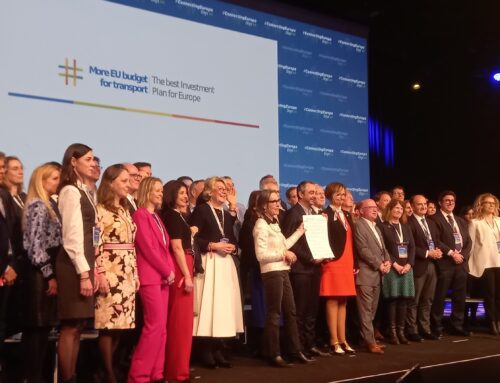TNO, after a study on the future digitalization of inland waterway transport, prepared a report to provide an architecture of possible Digital Inland Waterway Area (DINA).
The study led to the DINA expert group that was set up by the European Commission’s DG MOVE.
Digitalization is fundamental for the future competitiveness of Inland Waterway Transport (IWT) as data is becoming an important economic asset.
DINA is a concept to interconnect information between IWT’s stakeholders and with other transport modes.
They identified the objectives for each category actors. The lack of digitalization threatens the competitiveness of IWT.
Summarized, the main challenges are:
- Inefficient navigation and traffic management
- Inefficient integration of IWT in logistics processes
- High administrative burden for complying with legislation
There are several underlying problem drivers which hinder the development of new digital tools and solutions in the sector:
- The fact that River Information Services were not developed with continuous and controlled data sharing in mind, which is a key requirement for many new digital solutions.
- Legal and commercial bottlenecks for sharing data.
- An IT-setup of barge operators which is not yet capable for continuous interaction with third parties.
- The IWT sector being limited in size and fragmented, making it difficult to achieve economies of scale for new solutions.
- The lack of an overall framework for electronic reporting covering different purposes, making it difficult to address the administrative burden.
The concept of DINA include framework, architecture and a roadmap (implementation strategy).
The DINA framework addresses the interdependences between solution, actors and their digital system identifying 4 integration: VERTICAL, HORIZONTAL, OPERATIONAL and ADMINISTRATIVE and how to implement them.
The DINA architecture is:
- Extension of RIS with real time data: providing additional (real-time) data, making them more interoperable and making the more useable for barge operators using new on-board e-IWT tools and apps.
- Data platform for barge operators: allowing them to control their own data and operations. This should allow barge operators to share data in a controlled way with other stakeholders such as public authorities (for reporting purposes), (inland) ports and terminals.
- Integration with booking and transport management platforms of shippers and LSP: this should provide better visibility and a better integration of IWT in the full logistics chain covering multiple modalities.
The DINA roadmap shows that the implementation needs SHORT, MEDIUM and LONG-TERM building blocks and the costs associated.
The focus needs on standardization and shared innovation; covering the required design, costs through a shared public-private innovation programme might help.






